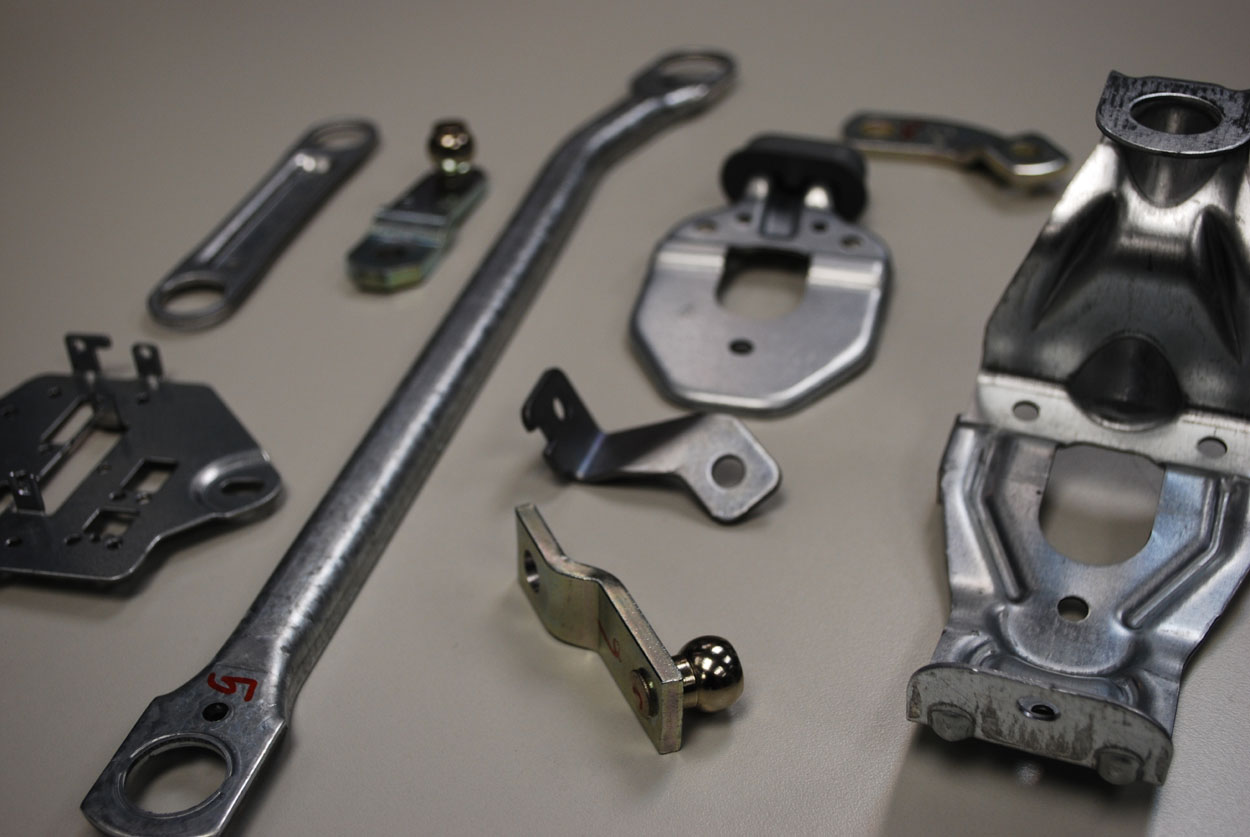New Renishaw Equator Checks The Quality Of Stamped Parts And Assemblies
Equator could reduce waiting time to zero, it can gauge difficult features and the price is very competitive

Eponsa, a manufacturer of automotive components located near Barcelona, Spain, has purchased a versatile and innovative shop-floor comparative gauge, the new Renishaw Equator, to check the quality of stamped parts and assemblies. This will reduce non-productive waiting times to a fraction of the time taken now, while maintaining the high quality and manufacturing efficiencies that are critical for the success of an automotive subcontractor.
Other advantages for Eponsa are that Equator can scan the form of part features with its SP25 probe and change styli with the stylus change rack, included as standard, to check a large variety of parts.
Eponsa, “Equator could reduce or eliminate quality room waiting times. This is because Equator can be used on the shop floor, alongside the machines producing the parts, and with the low purchase cost we can have several Equators positioned where we need them. We plan to have Equators alongside the stamping area and in the area for assembling mechanisms, where they will be particularly important. The speed of operation and measurement capability of Equator will ensure rapid, comprehensive and fully automated gauging.”
Eponsa believes that Equator will be welcomed on the shop floor since it will reduce the workload considerably. Eponsa operators are inspecting thousands of parts every day, using documented procedures. Visual checks are done to ensure holes are present and that there are no cracks in the material, followed by dimensional measurements with hand instruments like callipers and plug gauges. Because the stamping processes are automated, making them very consistent and reducing the chances of human error, operators can usually detect potential problems before scrap parts are made, to ensure 100% good parts. However measurement with hand gauges is time consuming, repetitive and all down to the skill of the operator - there is more chance of the inspection process being wrong than the manufacturing process. Equator’s repeatability is set to change all that.
Equator is an independent and traceable test of part quality, with the difference that all the operators can use it rather than just quality staff – currently a quality inspector walks around the plant constantly checking that procedures are being followed and parts are good. This is done with a visual check followed by taking the last part in every batch and performing a full inspection in the quality room. Experience has shown that if the last part is good then the whole batch is good, but this still means a long queue at the quality room.
The Equator system includes easy to use graphical software called MODUS™ Organiser, which is designed for shop floor operators to activate checks, with just a few minutes of training. This software is vital to the operation of Equator, “MODUS Organiser is the perfect way to run Equator on the shop floor, it is so simple and useful. The operators are able to choose programs and start checking the parts in a few seconds, with an immediate view of how long the check will take on a countdown timer. Once the check is complete the operator sees a clear indication of whether a part has passed or failed – in the quality department we then only have to deal with any suspicious parts, instead of every part. This is reducing the load on the quality department considerably.”
The gauging programs are written using Renishaw MODUS software, but use of this is access-controlled. As Eponsa says “It is a very good idea that only programmers can create and change programs, we can then set up the Equators knowing that the programs are running correctly and operators will not be making any changes. We make it easy for the operators to find the right program in MODUS Organiser by including photos of the part, which also shows them how the part is placed on the fixture. The intention is to use as few fixtures as possible, with many parts using each configuration.”
Equator uses a comparison method of mastering and measuring that will be very familiar to any existing users of dedicated gauging systems. A master component with features of known dimensions is used to ‘zero’ the system, with all subsequent measurements compared to this part. The key to the Equator system is a highly repeatable and radically different metrology mechanism based on a structure known as parallel kinematics. This mechanism is lightweight, allowing rapid motion, yet very stiff during comparison measurement of features, with repeatability of less than ±2 µm. This has been proven on a wide variety of both prismatic and free-form features.
80% of Eponsa’s business is producing automotive components, the other 20% is general subcontract stamping, welding and assembly work. Designing and commissioning all their quality and manufacturing processes themselves is a big advantage, allowing them total control. This includes design of the stamping tools and welding/assembly jigs.
Eponsa is certified to ISO-TS16949, a specific standard for the automotive industry and ISO14001. It directly supplies factories around the world in Mexico, South Africa, Germany, Hungary, China and Korea.
The pressure on automotive subcontractors to reduce costs while simultaneously improving efficiency and quality might seem to be at odds with each other, but Eponsa firmly believe that Equator technology is the break-through they need to help them achieve this.
CONTACT
Chris Pockett
Renishaw plc
chris.pockett@renishaw.com
www.renishaw.com
+44 (0) 1453 524524
Saturday 14 May 2011 / file under Technology | New Products | Engineering | Automotive | Aerospace



